Dynamic Spatial Responsiveness in Concert Halls
Abstract
:1. Introduction
1.1. (Dynamic) Spatial Responsiveness
1.2. Research by Wettschurek
- reflections from behind (“Hinten”) have the highest perception threshold at all listening levels;
- for all reflection directions, the perception threshold decreases almost linearly with increasing listening level until approximately 40 dB;
- at listening levels higher than 40 dB, the sensitivity to reflections from the front (“Vorne”) begins to plateau. Sensitivity to reflections from behind (Hinten) plateaus at levels above approximately 60 dB;
- above 40 dB however, the sensitivity to reflections from the side continues to increase approximately linearly with listening level;
- by 80 dB, the sensitivity to reflections from the side is almost 10 dB greater than for reflections from the front or rear, which at this listening level have an almost equal sensitivity of 8 dB below the direct sound level.
- At the lowest listening levels, most reflections would not be perceived and room presence would be extremely weak or nonexistent. The direct sound would dominate with the sources on stage being clearly localizable;
- As overall listening level increases through a crescendo, reflections from the front and side (having a lower threshold than those from the rear) would be the first to be perceived, with the expected subjective effect being an initial increase in the apparent source width (ASW), as observed and subsequently measured by Keet [2];
- As overall listening level increases further, the perception threshold for reflections from all directions of arrival continues to decrease. As a result, additional, relatively quiet reflections (e.g., from behind) become perceivable and room presence increases—this corresponds with listening experience in concert halls and the comments of Marshall [1], Kuhl [4], and others;
- Above a listening level of 60 dB, the thresholds for reflections from the front and rear plateau, while the threshold for side reflections continues to decrease. If reflection paths from the side exist, then these should become increasingly perceivable as overall listening level increases, resulting in a subjective increase in room presence.
2. Reflection Thresholds with Speech and Music
2.1. Experiment with Speech
2.2. Reflection Perception Thresholds with Music
2.3. Subjective Effects of Changing Listening Level
3. Detecting Dynamic Spatial Responsiveness
3.1. Dynamic Spatial Response Filter
3.2. Results from Measurements
4. Conclusions
Author Contributions
Conflicts of Interest
References
- Marshall, H. A note on the importance of room cross-section in concert halls. J. Sound Vib. 1966, 5, 100–112. [Google Scholar] [CrossRef]
- Keet, W.V. The influence of early lateral reflections on the spatial impression. In Proceedings of the Sixth International Congress on Acoustics, Tokyo, Japan, 21–28 August 1968; Volume 3, pp. E53–E56. [Google Scholar]
- Barron, M. The subjective effects of first reflections in concert halls—The need for lateral reflections. J. Sound Vib. 1971, 15, 475–494. [Google Scholar] [CrossRef]
- Kuhl, W. Räumlichkeit als Komponente des Raumeindrucks. Acta Acust. 1978, 40, 167–181. [Google Scholar]
- Barron, M.; Marshall, A.H. Spatial Impression due to Early Lateral Reflections in Concert Halls: The Derivation of a Physical Measure. J. Sound Vib. 1981, 77, 211–232. [Google Scholar] [CrossRef]
- Barron, M. Objective Measures of Spatial Impression in Concert Halls. In Proceedings of the 11th International Congress on Acoustics, Paris, France, 19–27 July 1983; pp. 105–108. [Google Scholar]
- Bradley, J.S.; Soulodre, G.A. Objective measures of listener envelopment. J. Acoust. Soc. Am. 1995, 98, 2590–2597. [Google Scholar] [CrossRef]
- Bradley, J.S.; Reich, R.D.; Norcross, S.G. On the Combined Effects of Early and Late-Arriving Sound on Spatial Impression in Concert Halls. J. Acoust. Soc. Am. 2000, 108, 651–661. [Google Scholar] [CrossRef] [PubMed]
- Morimoto, M.; Iida, K.; Sakagami, K. The role of reflections from behind the listener in spatial impression. Appl. Acoust. 2001, 62, 109–124. [Google Scholar] [CrossRef] [Green Version]
- Furaya, H.; Fujimoto, K.; Ji, C.Y.; Higa, N. Arrival direction of late sound and listener envelopment. Appl. Acoust. 2001, 62, 125–136. [Google Scholar] [CrossRef]
- Pätynen, J.; Tervo, S.; Robinson, P.W.; Lokki, T. Concert halls with strong lateral reflections enhance musical dynamics. Proc. Natl. Acad. Sci. USA 2014, 11, 4409–4414. [Google Scholar] [CrossRef] [PubMed]
- Pätynen, J.; Lokki, T. Perception of music dynamics in concert hall acoustics. J. Acoust. Soc. Am. 2016, 140, 3787–3798. [Google Scholar] [CrossRef] [PubMed] [Green Version]
- Pätynen, J.; Lokki, T. Concert halls with strong and lateral sound increase the emotional impact of orchestra music. J. Acoust. Soc. Am. 2016, 139, 1214–1224. [Google Scholar] [CrossRef] [PubMed] [Green Version]
- Pätynen, J.; Lokki, T. Towards a common parameter characterizing the dynamical responsiveness of a concert hall. J. Acoust. Soc. Am. 2017, 141, 3599. [Google Scholar] [CrossRef]
- Wettschurek, R. Über die Abhängigkeit raumakustischer Wahrnehmung von der Lautstärke. Ph.D. Thesis, Technical University of Berlin, Berlin, Germany, 1976. [Google Scholar]
- SPAT Acoustic Simulation Tool by IRCAM. Available online: http://forumnet.ircam.fr/product/spat-en2 (accessed on 1 March 2017).
- Griesinger, D. The Psychoacoustics of Apparent Source Width, Spaciousness and Envelopment in Performance Space. Acta Acust. 1997, 83, 721–731. [Google Scholar]
- SDM Toolbox from Aalto University. Available online: https://www.mathworks.com/matlabcentral/fileexchange/56663-sdm-toolbox (accessed on 1 June 2017).
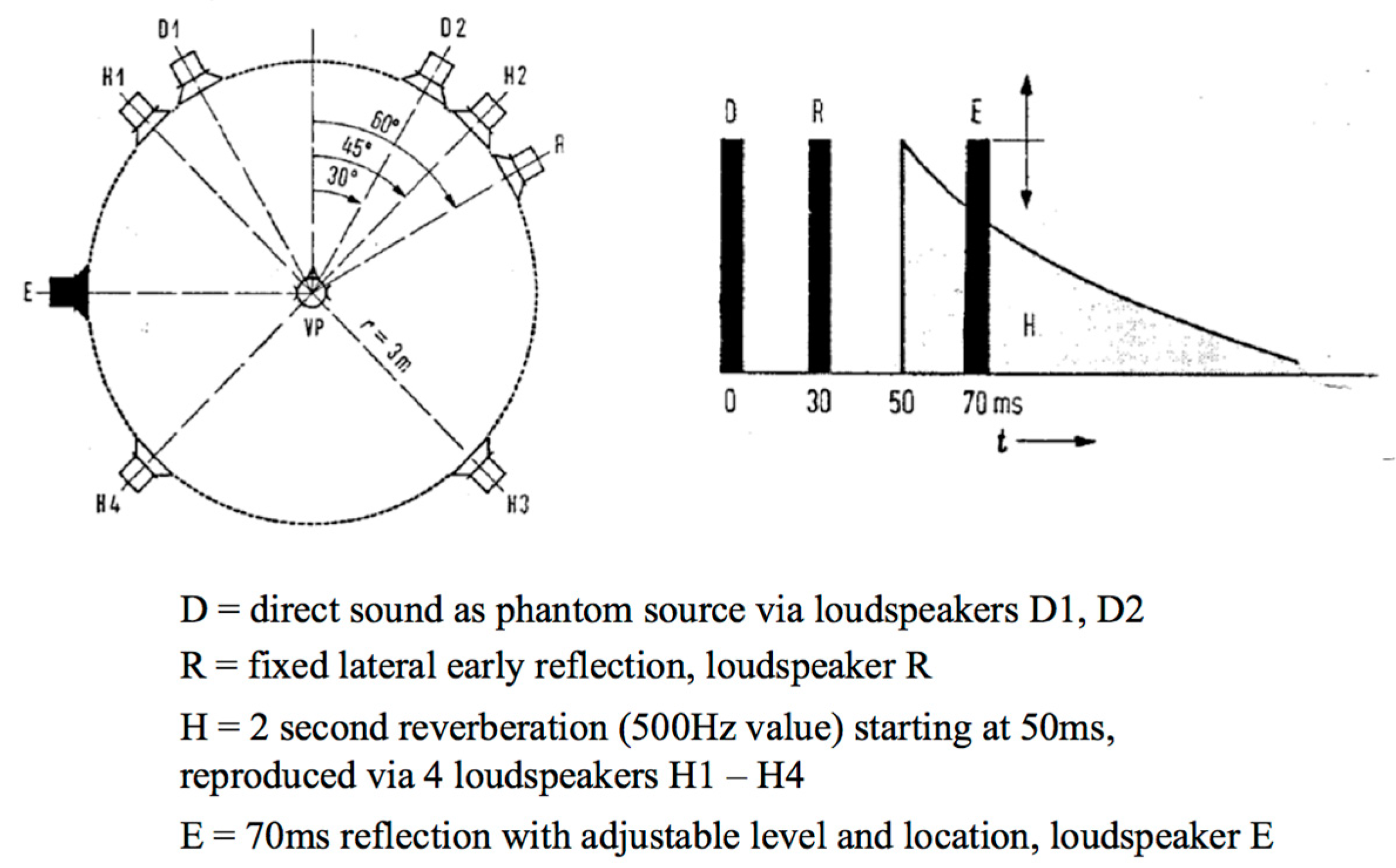
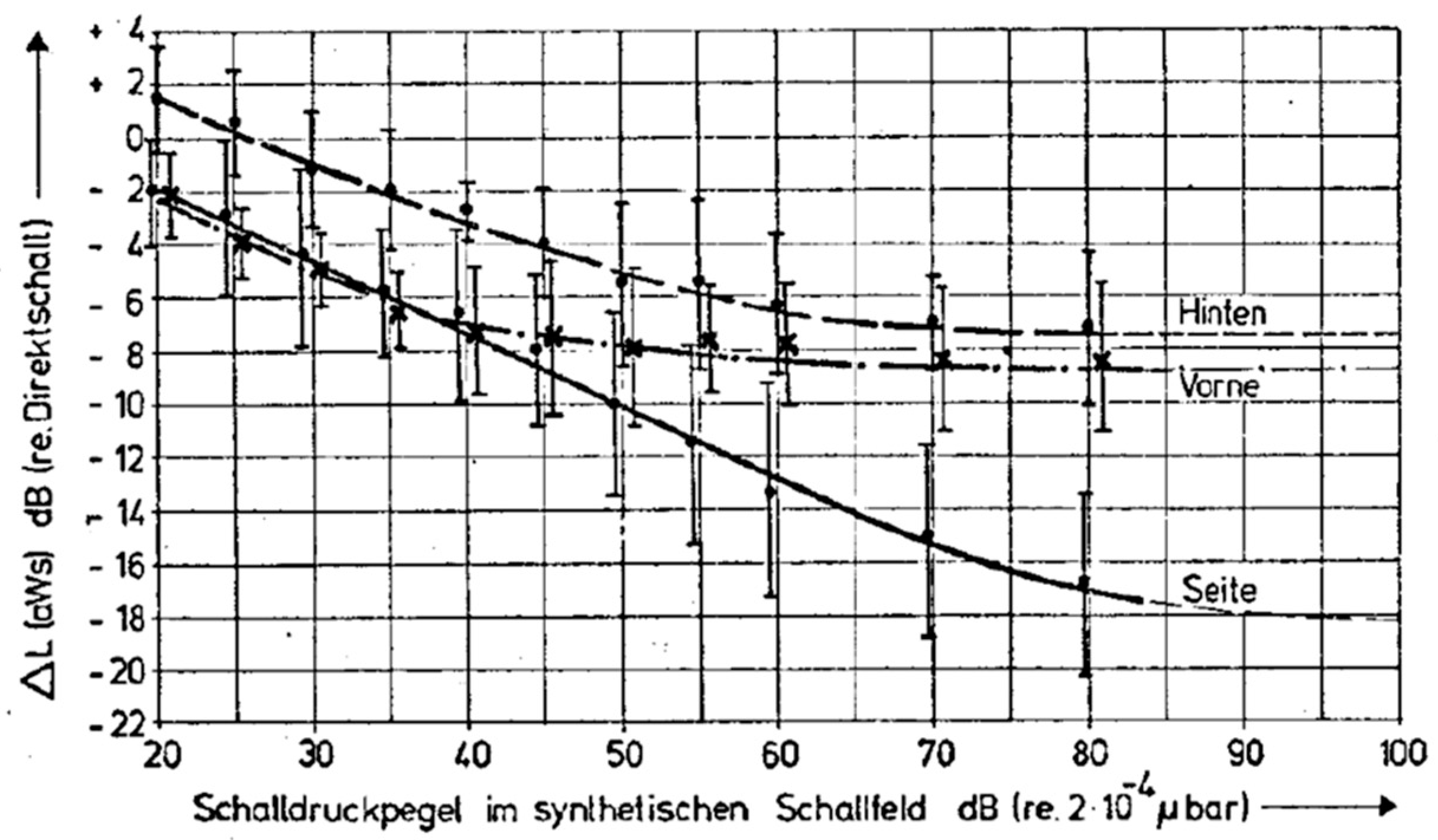
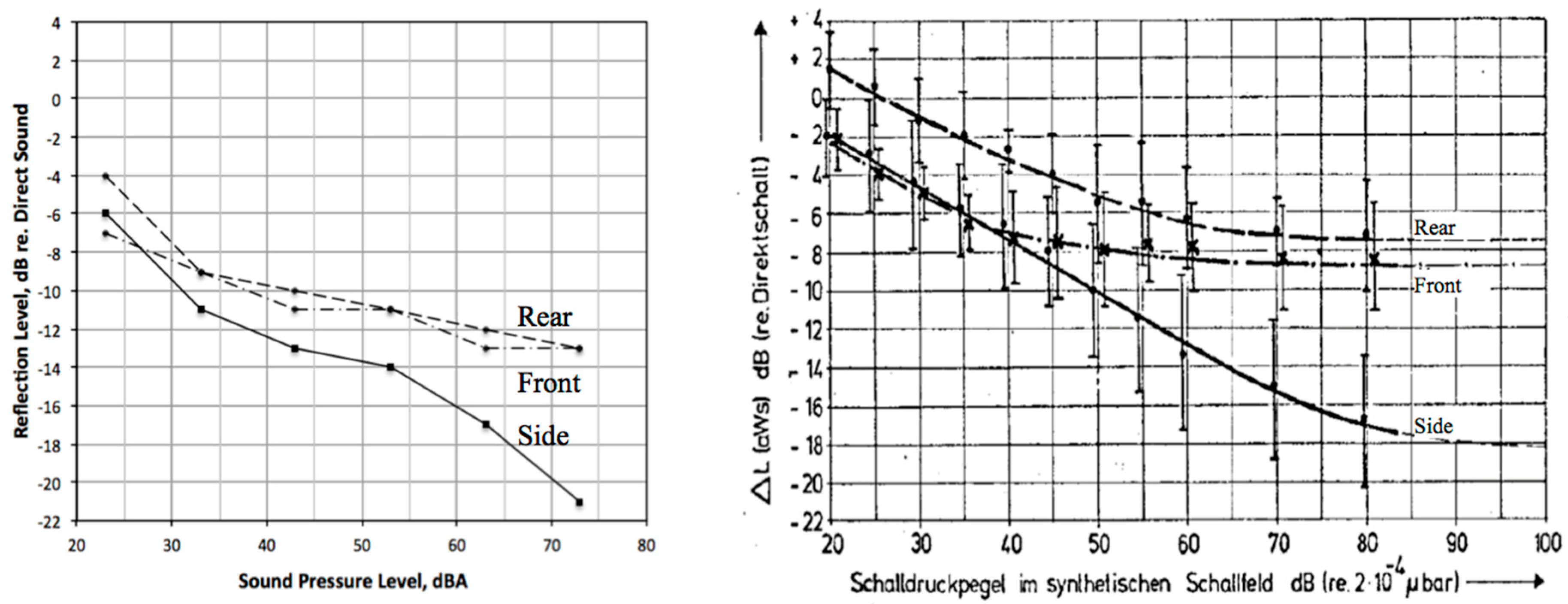
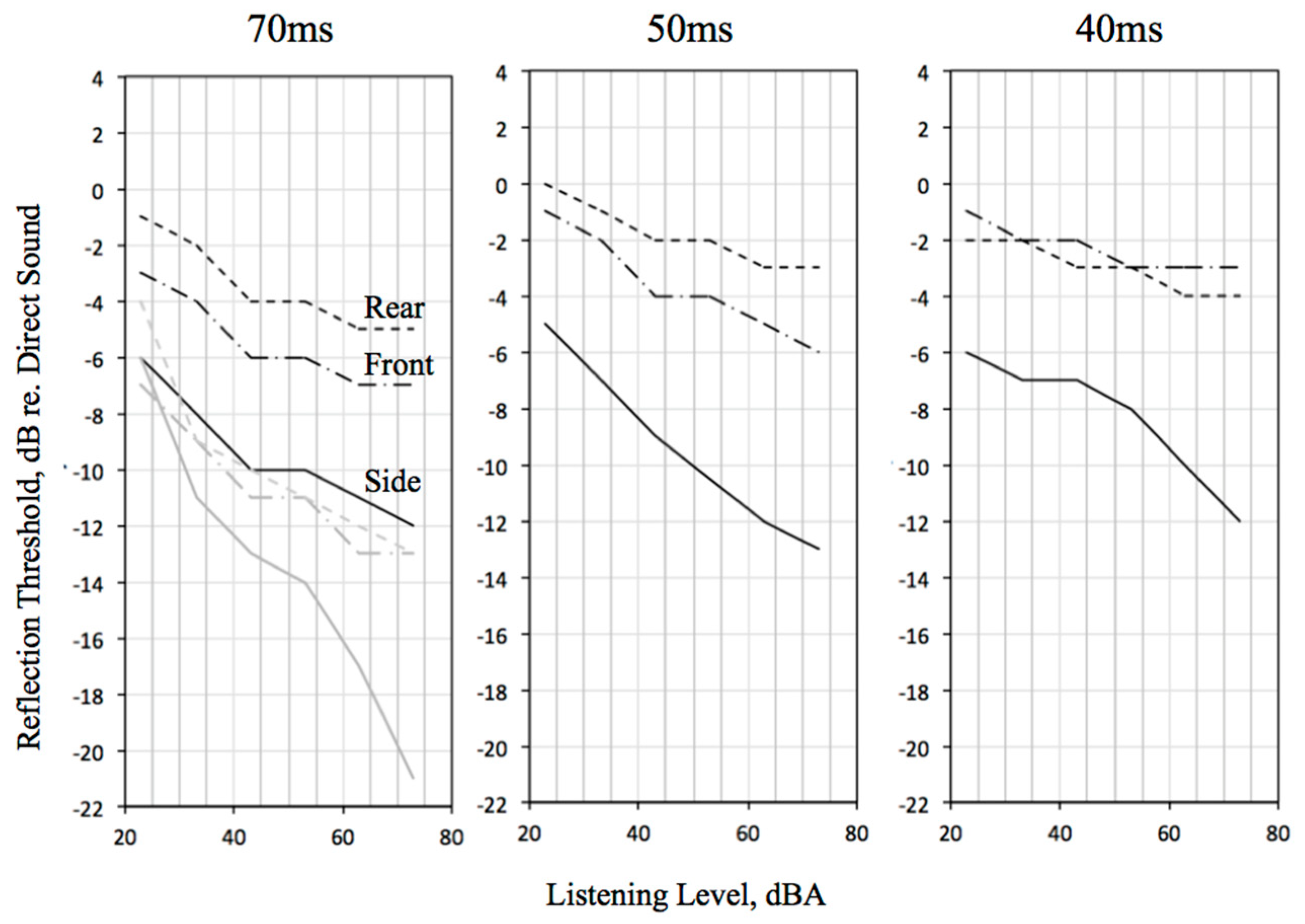
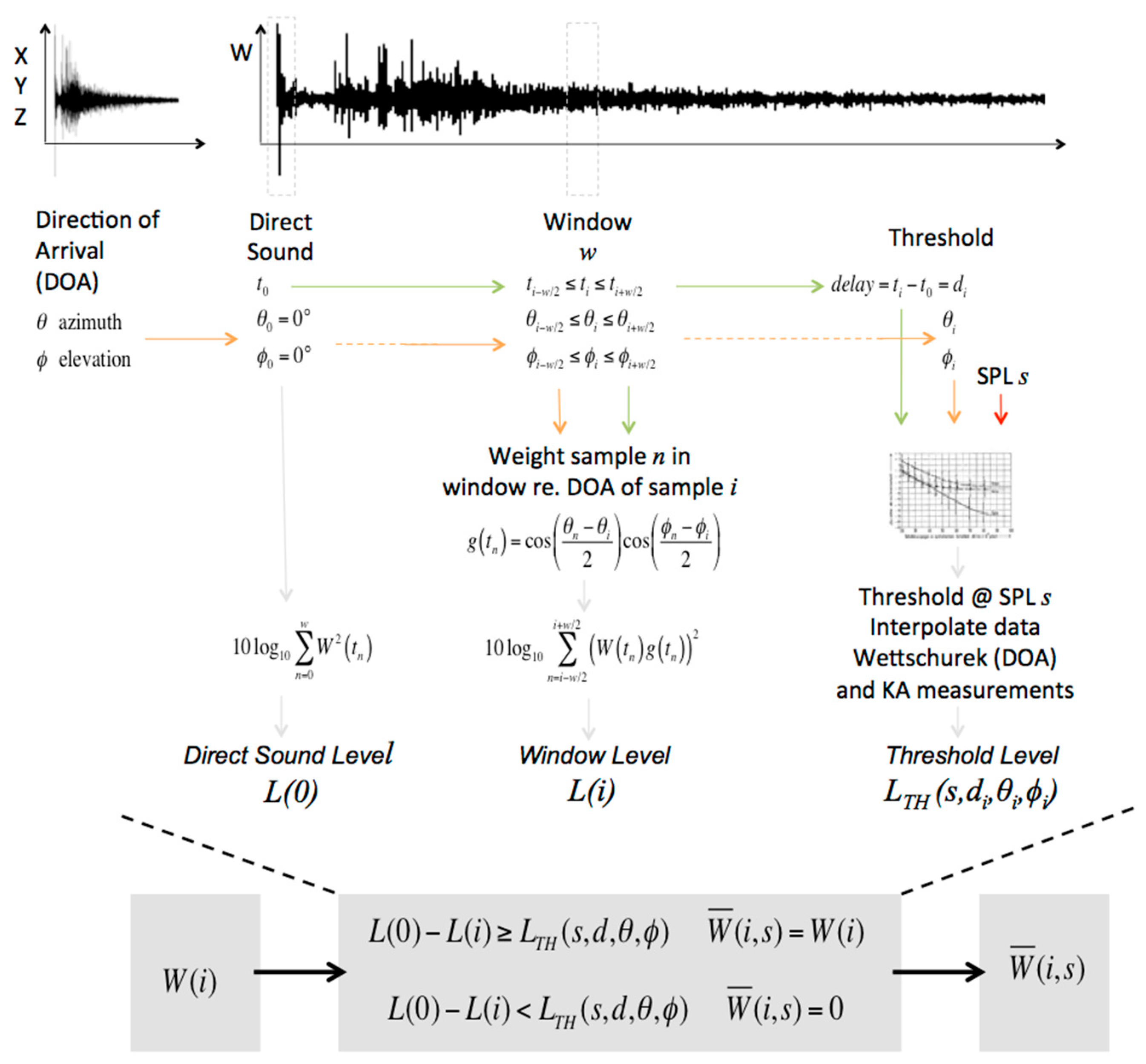
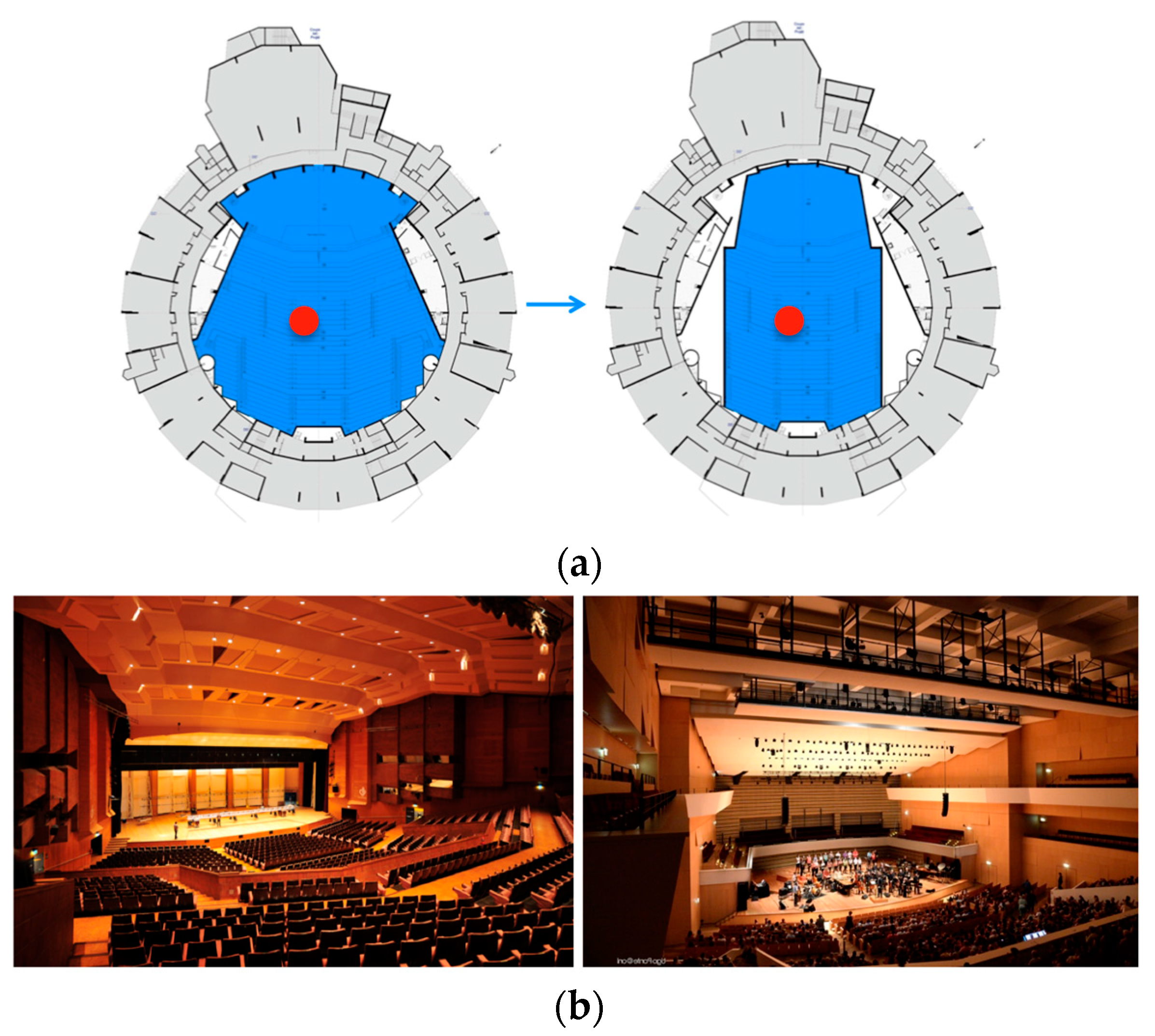
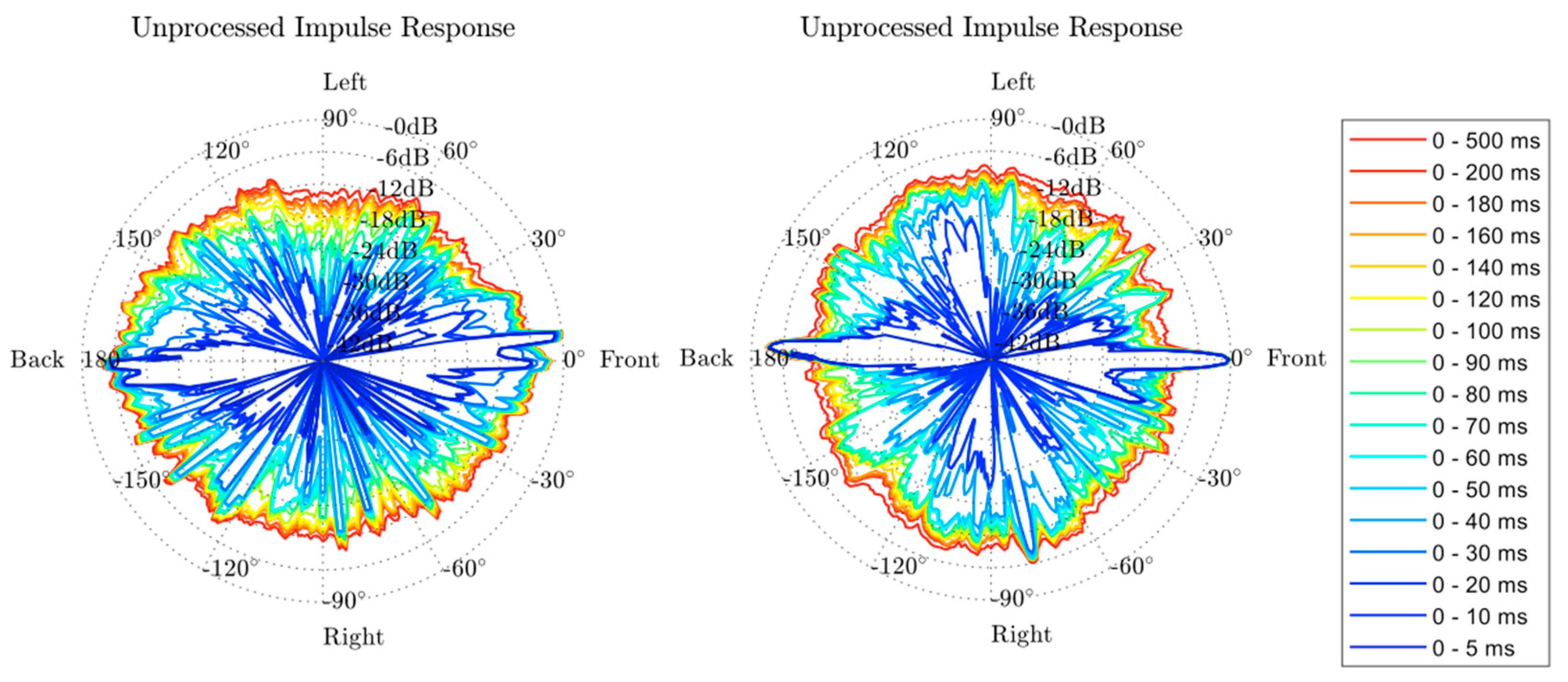
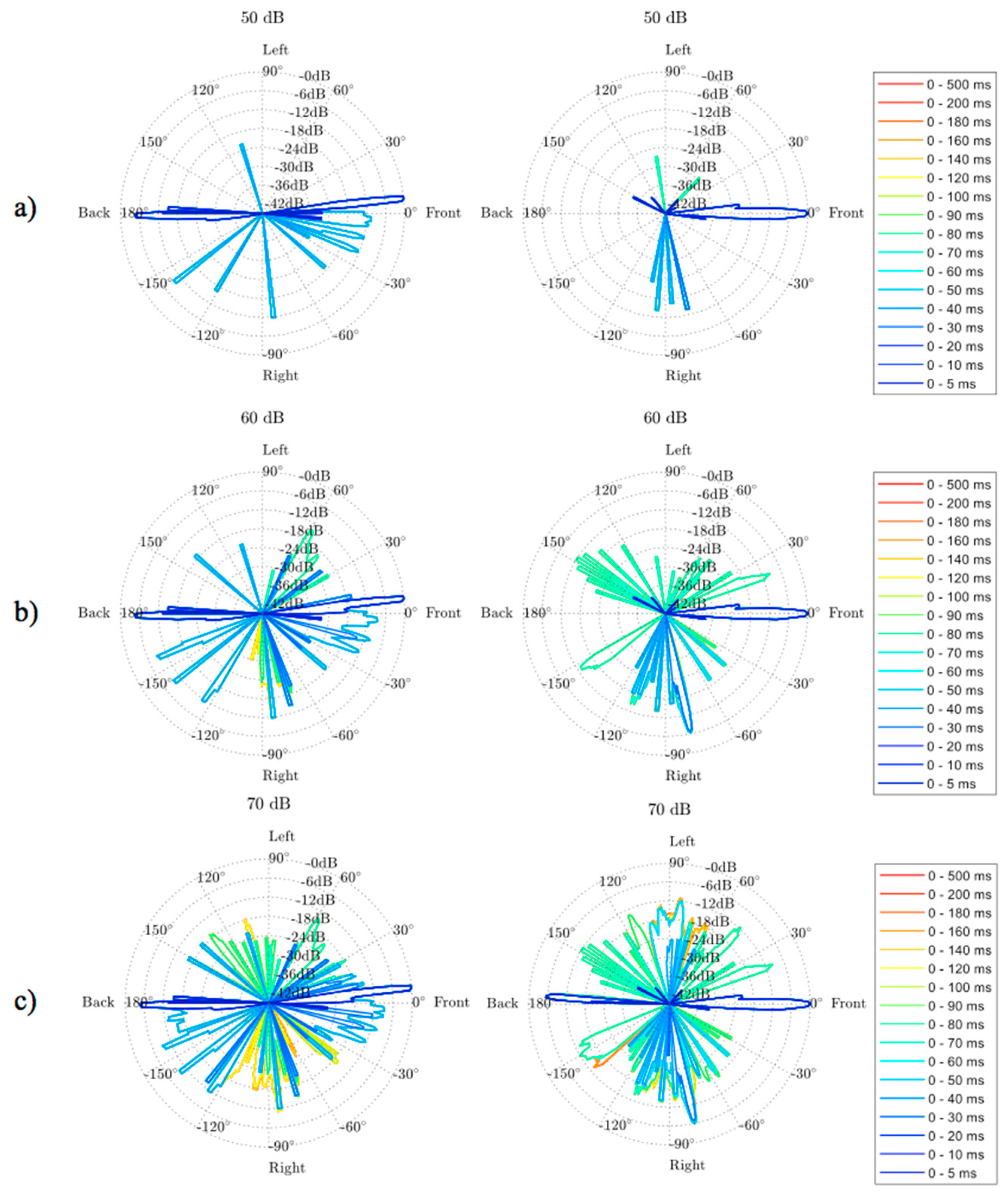
© 2019 by the authors. Licensee MDPI, Basel, Switzerland. This article is an open access article distributed under the terms and conditions of the Creative Commons Attribution (CC BY) license (http://creativecommons.org/licenses/by/4.0/).
Share and Cite
Green, E.; Kahle, E. Dynamic Spatial Responsiveness in Concert Halls. Acoustics 2019, 1, 549-560. https://doi.org/10.3390/acoustics1030031
Green E, Kahle E. Dynamic Spatial Responsiveness in Concert Halls. Acoustics. 2019; 1(3):549-560. https://doi.org/10.3390/acoustics1030031
Chicago/Turabian StyleGreen, Evan, and Eckhard Kahle. 2019. "Dynamic Spatial Responsiveness in Concert Halls" Acoustics 1, no. 3: 549-560. https://doi.org/10.3390/acoustics1030031
APA StyleGreen, E., & Kahle, E. (2019). Dynamic Spatial Responsiveness in Concert Halls. Acoustics, 1(3), 549-560. https://doi.org/10.3390/acoustics1030031



